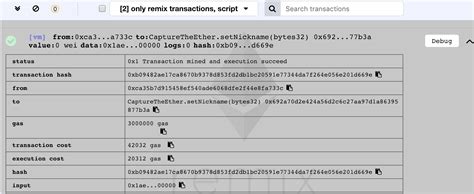3 min de lectura
Metamask: Send transaction only with signature
CRYPTOCURRENCY
Metamaski: Sending Transactions with Signatures
As web developers, we often rely on various blockchain platforms to facilitate secure transactions between users. One popular option is MetaMask, an easy-to-use interface for interacting with the Ethereum blockchain. However, when it comes to sending transactions, a common limitation of MetaMask has frustrated many users: the requirement to send transactions before signing them.
In this article, we’ll explore why MetaMask requires a send and how you can overcome this limitation using the “send” feature with a signature.
Why broadcast events?
Before diving into the solution, it’s important to understand why MetaMask needs to broadcast events. When you make a transaction, it typically includes not only the value of the asset being transferred, but also a unique identifier (address) associated with the sender and recipient. To ensure that a transaction is valid on the blockchain, these addresses must be broadcast to the entire network.
The broadcast process involves creating a Merkle tree that groups all transactions in a way that allows for efficient verification of the correctness of the transaction. This process can be computationally expensive and time-consuming, making it a difficult task for individual users like you to process transactions without significant resources or infrastructure.
Limitation: Sending Events with Signatures
Now let’s discuss why MetaMask requires a broadcast:
- Verification

: To ensure that all transactions are valid and follow the rules of the blockchain network (Ethereum), MetaMask needs to verify them before they are accepted.
- Merkle Trees: As mentioned earlier, broadcast helps create Merkle Trees to verify the correctness of a transaction. This requires significant computational resources and infrastructure.
Workaround: Send function with a signature
To overcome this limitation and allow users like you to send transactions without sending them, MetaMask introduced a signed «send» function in the latest version (0.x).
You can use it as follows:
Sending events with signatures
To send a transaction using the send with signature function from your local wallet, follow these steps:
- Make sure you have MetaMask installed on your server.
- Go to the MetaMask app and select «Send» or click the «Send» button in the upper right corner of the interface.
- Enter the event details in the Send modal:
- Amount: Enter the value of the asset to be transferred (in ETH).
- Sender: Select the sender’s address.
- Recipient
: Select the recipient’s address.
- Network: Select your network (e.g. Ethereum Mainnet).
- In the “Signature” section, MetaMask will ask you to sign the transaction. To do this, follow these steps:
- Return to the “Send” module and click “Sign”.
- Select “Use Account Signature” or select a previously signed transaction.
- The transaction data is sent directly to the Ethereum network.
Conclusion
Using MetaMask’s “send” feature with a signature, you can send transactions from your local wallet without sending them to the network. This approach is especially useful for small-scale development projects where resources are limited or when working with blockchain applications that require a lighter solution.
Note that this is just an example and may require modifications depending on your use case. For more advanced solutions, you should explore other integration methods, such as interacting with the Ethereum mainnet directly via JavaScript or using third-party libraries.
We hope this helps! Let us know if you have any questions or need further clarification on this process.